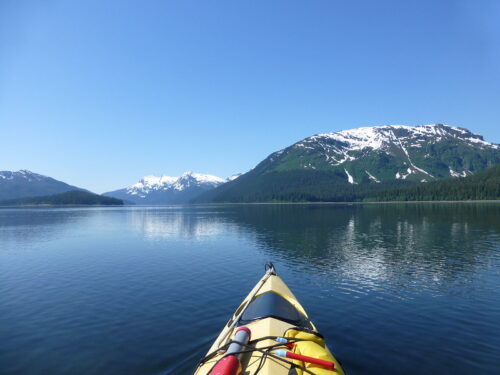
USDA Forest Service To Rezone Tongass: SalmonState Approves Of Decision
The following press release is courtesy of SalmonState:

Forest Service to rezone nation’s largest forest: the Tongass
Southeast Alaskans consistently cite subsistence and traditional use, recreation, tourism, sustainable economic development as among top priorities
APRIL 26, 2024
FOR IMMEDIATE RELEASE
JUNEAU—SalmonState commends the U.S. Department of Agriculture for today announcing that it is beginning, for the first time in almost three decades, a first full rewrite of the Land Management Plan for the Tongass National Forest in Southeast Alaska.
“With this announcement, the Forest Service is codifying its effort to bring management of the Tongass into the 21st century, and to be more reflective not only of the values of those who live here, but the needs of local communities and ecosystems,” said SalmonState Executive Director Tim Bristol. “We commend the Forest Service for this important step and look forward to working with them to ensure Southeast Alaskan priorities like wild salmon, traditional use, and recreation get the attention they deserve.”
“It’s exciting to see the ways the conversation has evolved since 1997, when the last plan was written,” said SalmonState Southeast Alaska Program Manager Dan Kirkwood. “Alaska Native values have become a prominent part of the discussion around managing the landscape, and we are now talking about managing tourism so that it benefits our communities. All of this is not only vital to our communities — it’s something that was previously put on the back burner.”
The Tongass is the nation’s largest national forest, home to Indigenous cultures since time immemorial. It produces millions of wild salmon each year, is home to some of the densest brown bear concentrations on the planet, and it is part of the largest temperate rainforest in the world. It is a nexus of American and global tourism and recreation, with more than half of all visitors to the state coming to Southeast Alaska thanks to its intact forests, world-class scenery, and healthy populations of iconic fish and wildlife. The magnificent Taku, Stikine and Unuk transboundary rivers flow from the glaciated boreal forest of British Columbia, Canada into the Tongass.
Background
A Forest Plan is a zoning document for the region’s national forest lands. It defines where activities such as different types of tourism or resource development may or may not be permitted.
In 2021, the Secretary of Agriculture released the Southeast Alaska Sustainability Strategy, which provides a framework for the Forest Service to move beyond decades of gridlocked conflict over land management by working more closely with Tribes, as well as ending the Forest’s large-scale old-growth timber harvests in favor of more sustainable young growth harvests, habitat restoration, and shifting agency focus to tourism and recreation management.
The Forest Service will start by writing a document called the “assessment” which will determine what they need to change in the outdated plan. The agency has collected extensive information from the public over the past few years, all of which indicates that the public is ready for a new direction in Forest Service management.
SalmonState works to keep Alaska a place wild salmon and the people whose lives are interconnected with them continue to thrive.



